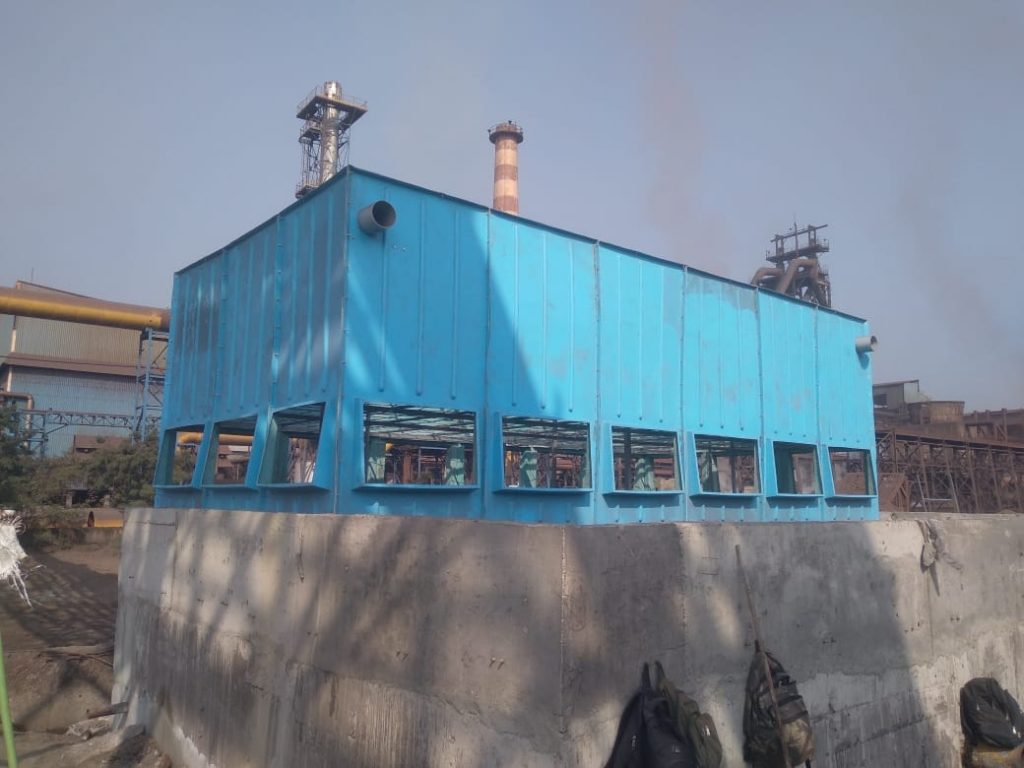Dry Cooling Towers
Dry cooling towers (also called air-cooled heat exchangers) reject heat without water evaporation, making them ideal for water-scarce regions or applications requiring zero water usage.
How Dry Cooling Towers Work
- Hot Process Fluid enters a sealed finned-tube coil.
- Ambient Airflow (forced by fans) passes over the coil.
- Sensible Heat Transfer cools the fluid without evaporation.
- Cooled Fluid returns to the process.
Key Principle:
- Heat is rejected only through air convection (no evaporative cooling).
- Cooling limited by dry-bulb temperature (less efficient than wet towers).
Types of Dry Cooling Towers
1. Direct Dry Cooling (A-frame/Heller System)
- Steam condenses directly in finned tubes.
- Used in power plants (no intermediate water loop).
2. Indirect Dry Cooling (with Heat Exchanger)
- Process fluid cools via a closed water loop (e.g., water-glycol).
- Common in HVAC, data centres, and industry.
3. Hybrid Dry Cooling (Adiabatic Assist)
Adds spray cooling on coil/air intake to boost efficiency in hot weather
- Reduces water use by >70% vs. wet towers.
Advantages
> Zero Water Consumption – Ideal for arid regions.
> No Legionella Risk – No water = no bacterial growth.
> Low Maintenance – No scaling, fouling, or water treatment.
> Stable Performance – Insensitive to humidity changes.
Disadvantages
> Lower Efficiency – Higher energy use (larger fans/more cells).
> Larger Footprint – Needs 2–5x more space than wet towers.
> Climate Limitations – Performance drops in high ambient temps.
Key Components
- Finned-Tube Coils – Aluminum/copper fins maximize heat transfer.
- Axial Fans – High-volume, low-speed fans for airflow.
- Steel Structure – Galvanized or stainless steel for corrosion resistance.
- Adiabatic Pre-Coolers (optional) – Misting nozzles for hybrid models.
Applications
- Power Plants (steam condensation in water-scarce areas).
- Data Centres (water-free cooling for critical facilities).
- Oil & Gas (process cooling where water is unavailable).
- HVAC Systems (chiller alternatives in dry climates).
Maintenance Requirements
- Coil Cleaning – Remove dust/debris (compressed air or rinsing).
- Fan Maintenance – Lubricate bearings, check belts.
- Adiabatic System Care (if equipped) – Nozzle descaling, water filtration.
Dry vs. Evaporative Cooling Towers
| Factor | Dry Cooling Tower | Evaporative Cooling Tower |
| Cooling Method | Air convection only | Evaporation + convection |
| Water Use | None | High (evaporation + drift) |
| Efficiency | Lower (limited by dry-bulb) | Higher (wet-bulb approach) |
| Energy Use | Higher (larger fans) | Lower |
| Footprint | Larger | Compact |
When to Choose Dry Cooling?
- Water restrictions (drought areas, zero-discharge policies).
- Clean processes (no water contamination allowed).
- Low humidity (hot/dry climates where wet towers struggle).
Hybrid Tip: For hot climates, adiabatic-assisted dry coolers balance water savings and efficiency.
Conclusion
Dry cooling towers trade higher energy costs for water conservation, making them essential for sustainable operations in arid regions. While less efficient than wet towers, they eliminate water treatment hassles and Legionella risks.
Need help sizing a system or comparing hybrid options? Ask about:
- Approach temperature calculations
- Retrofitting wet towers to hybrid/dry
Fan optimization strategies
